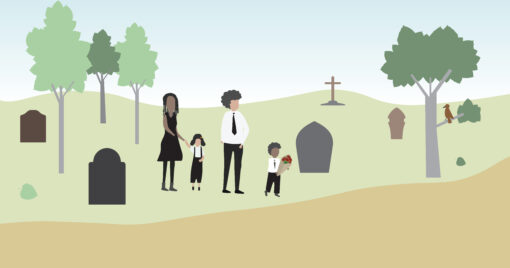
Licensee FAQ
Welcome to the Bereavement Authority of Ontario’s FAQ for licensees
Here’s a list of Frequently Asked Questions (FAQ) that our BAO staff regularly receive in phone calls and emails. Some of the answers to these questions and more are also found in our handy and free BAO Consumer Information Guide. See page four to reference the guide’s table of contents.
‘Control-F’ to search by topic
To search for your topic, click and hold the ‘Ctrl’ key on your computer, then click the letter ‘F’ –then type your keyword(s) and click ‘Enter’. (Click on ‘Command’ + F in Safari Mac browsers.)
For the public (families/consumers), we also have an FAQ page for you.
FAQ for licensees –
Professionals & business operators licensed by the BAO
1. From whom to Take Direction – Who has the right to make arrangements for the deceased?
The Funeral, Burial and Cremation Services Act, 2002 (FBCSA) does not prescribe from whom to take direction for the provision of death care services. As a result, the BAO cannot provide legal advice on any matter relating to the entitlement of any person to make death care decisions, and can only offer general guidance and information.
If there is no will, and therefore no executor/estate trustee, the Succession Law Reform Act sets out how the deceased’s estate will be distributed.
It is up to the funeral home to be satisfied that they are dealing with the correct parties. If there is a family dispute among next of kin, we would advise the funeral home to advise the family to either reach an agreement or go through the courts to have an administrator assigned. In addition, funeral homes are encouraged reach out to their own legal counsel for guidance.
Interment rights, if not specifically mentioned in a will, typically follow the Succession Law Reform Act. This means, for example, that after the interment rights holder (IRH) passes away, the rights are passed to the living spouse first. If there is no spouse, then equally to adult children. If there are no children, then in order of grandchildren, great grandchildren, parents, then siblings, then to aunts, uncles and cousins. The foregoing is not intended as legal advice, and families should be encouraged to seek independent legal advice specific to their situations.
It is up to the individual cemetery to be satisfied that they are dealing with the correct parties, and in many cases, supporting documentation or permission forms as proof that they are taking direction from the current IRH may be required.
2. What steps should we take with unclaimed cremated remains?
An operator must keep cremated remains for a minimum of one year from the date of cremation after which time the operator may arrange for their interment in common ground. Pursuant to O. Reg. 30/11, an operator in possession of cremated remains must make reasonable attempts to contact the person entitled to receive the cremated remains prior to the interment.
3. Are refund cheques on prepayments issued to the Estate of the deceased?
The Funeral, Burial and Cremation Services Act, 2002 (FBCSA) does not specify to whom the refund must be made. While it is typically the estate of the deceased or the owner of the funds originally used to prepay for the contract, this remains a business decision at the operator level and may depend on the terms and conditions of the original contract.
4. Do I need to update my place of employment, if it changes?
Yes. Licensees are required to notify the BAO of any changes to their employment within 15 days of the change and must include the reason(s) for termination, if applicable. All changes must be received in writing by sending an email or submitting a Change of Personal Information form.
5. To whom must cemetery by-laws be submitted?
By-laws must be submitted to the BAO and approved prior to taking effect. The submission procedure is on our website on this page called Cemetery Sample Documents and Contract. If a cemetery does not have by-laws, sample by-laws are available on that webpage.
6. A. Do I have to submit my price list to the BAO as well?
Price lists, contracts, and interment rights certificates are not required to be filed with the BAO but will be reviewed for compliance as part of the inspection process. All operators in Ontario must be in full compliance regarding these requirements.
As a reminder, in accordance with Section 69 (1) of Ontario Regulation 30/11, cemeteries must notify any affected marker/monument supplier that you have dealt with in the past 12 months about such increases and must do so at least 30 days prior to the new price taking effect. Price lists must be on an operator’s public website or offered in print to the public.
6. B. For cemeteries, the answer to that question is a little different.
Since January 2025, all cemetery operators are required to submit their price list along with their annual Care and Maintenance Fund report (Form 2) submissions. All operators in Ontario must be in full compliance regarding these requirements.
Cemetery contracts, and interment rights certificates are not required to be filed with the BAO, but will be reviewed for compliance as part of the inspection process.
As a reminder we add that, in accordance with Section 69 (1) of Ontario Regulation 30/11, cemeteries must notify any affected marker or monument supplier that you have dealt with in the past 12 months about price increases, and must do so at least 30 days prior to the new price taking effect. Price lists must be on an operator’s public website or offered in print to the public.
7. What can cemeteries spend Care and Maintenance income on?
Please refer to the Ontario Regulation 30/11 Section 93 for the details on the acceptable use of income from your Care and Maintenance fund or account.
8. What is required for a disinterment?
Written permission from all interment rights holders and arrangements for the transfer of the deceased/cremated remains to the new place of interment, where applicable, must be made prior to the disinterment taking place. In the case of a full body disinterment, notification must be made to the local medical officer of health (Medical Officer of Health’s permission is not required for a disinterment of cremated remains).
The original cemetery must update its records and retain all written permissions. If the lot is re-purchased from the interment rights holder(s) or resale of the interment rights is permitted, prospective purchasers must be advised that the lot was previously used. Consider restricting non-staff presence at the disinterment where safety could be a concern. The cost for disinterment must be on your price list, and your by-laws should outline what is included in the cost of a disinterment. Please see Ontario Regulation 30/11 Section 162 – Disinterment and removal of human remains.
9. Can the use of vaults be required?
The use and sale of outer liners and / or vaults to consumers cannot be made mandatory, unless the Medical Officer of Health deems it necessary. Cemetery by-laws can require the use of vaults or liners for specific sections where there are safety concerns requiring it, i.e., issues with the water table, grading, sloping or embankments or for double/extra depth interments. Operators that require the use of vaults in certain situations must also have a section available where the use of vaults is not mandatory.
10. What are the depth requirements for the burial of cremated remains?
There is no provision in the FBCSA outlining a required depth for the interment of cremated remains. Operators are urged to include a policy for interment of cremated remains in their by-laws.
11. A. Should a small cemetery operator, with usually fewer than 10 interments per year, be collecting the $30 fee in case they end up reporting more than 10-interments on their annual licence renewal? (the threshold requiring that $30 licensing fee be paid to the BAO).
11. B. If cemetery operator collects the fee, but then doesn’t report more than 10 interments do they then have to refund the fee to the consumer or would they remit the fees to the BAO regardless of the Annual Licensure Report exemptions?
Cemetery operators who are unsure whether they will exceed 10 interments in a given year can decide whether they want to collect the Bereavement Authority of Ontario Consumer Protection Fee throughout the year or not. They may also decide whether to include the $30 fee in their service fees (such as in the opening and closing fee), or to list it separately as a disbursement.
Cemetery operators choosing to list the fee as a disbursement, and not exceeding 10 interments that year, would not be expected to refund the fee to consumers nor forward it to the BAO.
(Answers to questions about the BAO’s licensing renewal fee — called the Bereavement Authority of Ontario Consumer Protection Fee — are found on this page.)
12. Will the Harmonized Sales Tax (HST) be subject to – or added to – the licensing fee, called the Bereavement Authority of Ontario Consumer Protection Fee?
The BAO does not charge HST on any of its fees.
13. Can people have their pets buried with them?
Yes, deceased pets can be buried with deceased humans at a human cemetery provided the cemetery bylaws permit this. Cemetery operators write their own bylaws, which must be approved by the Registrar, Funeral, Burial and Cremation Services Act, 2002. The Act itself is silent on pets being buried with humans in human cemeteries. So, the BAO has chosen to write a guideline for cemetery operators, if the operators want to permit burials of pets with humans. Read the guideline here.
14. Where can I find BAO forms? (concerning licensing, forms for funeral homes, cemeteries, crematoriums, alternative disposition facilities…)
Here’s our short article on that subject with links to commonly used forms by licensees. Other handy links are available on our Licensee Resource Hub.
15. Does the BAO licence renewal fee apply to all deaths?
No. There are exceptions.
As of April 1, 2025, the BAO licensing renewal fee does not apply to bereavement care services provided in relation to stillbirths.
In tandem with the provincial government’s announcement in the fall removing the associated cost and simplifying the process of obtaining a certified copy of stillbirth registration, the BAO eliminated its licensing fees associated with death care services for a stillborn child. (Families may want to read more about the government’s announcement here.)
The end of this licensing fee took effect on April 1, 2025, at the start of the authority’s fiscal year. The elimination includes fees that licensees would have paid to the BAO for funeral services, transfers, burials and cremations regarding stillbirths. (Read the BAO’s message to licensees here.)
The licensing renewal fee also does not apply to deaths not required to be registered, such as products of conception that do not constitute a stillbirth under the Vital Statistics Act, 1990 (fetuses that are less than 500 grams in weight or less than 20 weeks of gestation); likewise, it does not apply to cremation, interment or scattering of products of conception.
16. Can funeral processions drive through red traffic lights?
No. They can not go through red lights. Those driving in a funeral procession must obey the law including stopping at red lights, unless there is a police escort with the procession.
17. What do I do when I encounter unmarked human remains within (or immediately adjacent to the known limits of) the cemetery that I operate?
It is normal to assume that any human remains found adjacent to or within a known cemetery are related to interments within that cemetery, and that is certainly the most common explanation. In order to verify that this is in fact the case, if you encounter unmarked human remains during your assessment, stop work immediately and notify the Office of the Chief Coroner (or the local municipal police or Ontario Provincial Police). The BAO would also appreciate being notified at Info@TheBAO.ca in order to prepare for next steps.
The police will secure the scene, and the Coroner will make the determination as to whether the remains are recently deposited and whether they were deposited as a result of foul play. If the Coroner determines that neither of these things are true, then the Coroner will contact the Registrar at the Ontario Ministry of Public and Business Service Delivery and Procurement (if the remains constitute a burial site under the Act) or the BAO (if the remains are part of a cemetery, within the meaning of the Act) to determine next steps. While you wait for the police and/or Coroner to arrive, make sure that you:
- Leave the remains in place and cover them temporarily with a tarpaulin or similar to maintain the dignity of the person whose remains were found, and to protect the remains from the elements or excessive damage due to handling. Do not move the remains to any other location.
- Avoid disturbing the remains and any associated funerary items or casket hardware further, and do not attempt to determine if the unmarked human remains within your cemetery constitute a crime scene or a burial site. This is the Coroner’s responsibility.
- Secure and protect the site by limiting access to the lot or section in which the remains were found. Do not leave the remains unattended.
- Leave the remains in place and cover them temporarily with a tarpaulin or similar to maintain the dignity of the person whose remains were found, and to protect the remains from the elements or excessive damage due to handling. Do not move the remains to any other location.
Licensing fee
Answers to questions about the BAO’s licensing renewal fee — called the Bereavement Authority of Ontario Consumer Protection Fee — are found on this page.
Contact us
Got a question we haven’t answered here? Please ask us your question at one of the email addresses on our Contact Us page.


